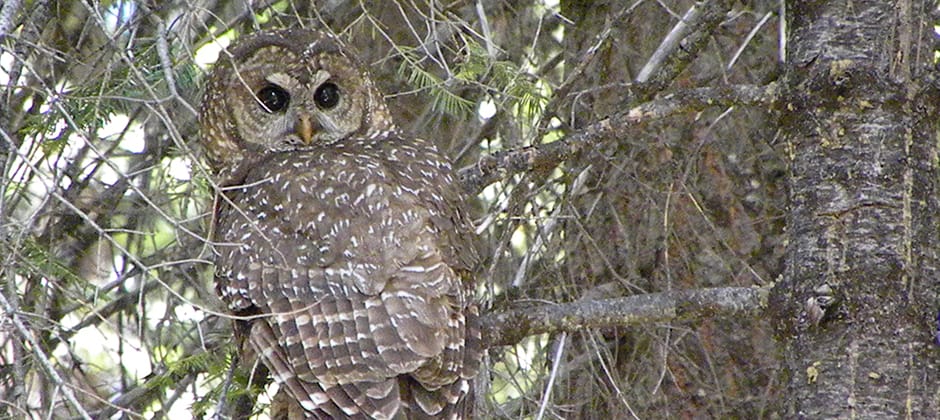Share this article
Yosemite spotted owl numbers stable after 2013 wildfire
California spotted owls remain in Yosemite National Park even after a massive wildfire burned through, which researchers say points to the effectiveness of the park’s efforts to re-create historic conditions that encourage less intensive blazes.
In a study published in Forest Ecology and Management, Lynn Schofield, a staff biologist for the Institute for Bird Populations, and her colleagues looked at how the 2013 Rim Fire impacted California spotted owls (Strix occidentalis occidentalis) in the park.
In other areas, like El Dorado County, California, where the King Fire passed through in 2014, biologists found the owls disappeared from most of the study area. But since Yosemite is managed to resemble historic conditions, Schofield wondered if owl behavior there would be different.
The owls remained after the fire, Schofield said, likely due to efforts to prevent high-severity burns. That helps explain why spotted owls in different areas responded differently to wildfires, she said.
“What’s probably the driving force for whether or not the owl is there isn’t the fire itself but the characteristics of the fire,” Schofield said.
Yosemite manages the land to allow for more frequent, heterogeneous fires that leave a mixed mosaic of severities. That could be more effective than using thinning and other treatments in an attempt to prevent forest fires, she said.
“Yosemite is an attractive place to do the study because as far as California spotted owls, there are few places where the habitat is on a broad scale somewhat similar to the historical context,” she said.
The park had conducted wildlife monitoring work beforehand, including gathering data on where spotted owls were nesting before and after the Rim Fire. Schofield’s team used acoustic monitoring and territory monitoring to determine where the birds were nesting. Satellite data helped them characterize the landscape and how severely it burned.
On the surface, it almost seemed the fire had no effect on the owls, Schofield said. The number of pairs present after the Rim Fire was the same as before the fire. But looking closer, the researchers found that although the owls remained in the fire perimeter at normal ratios, many were not using heavily burned areas.
The owls seemed to be productive after the fire, though. The team saw similar numbers of nests and juveniles as before the fire.
Header Image:
California spotted owls returned to Yosemite National Park after the Rim Fire burned through.
Credit: Ryan Kalinowski








